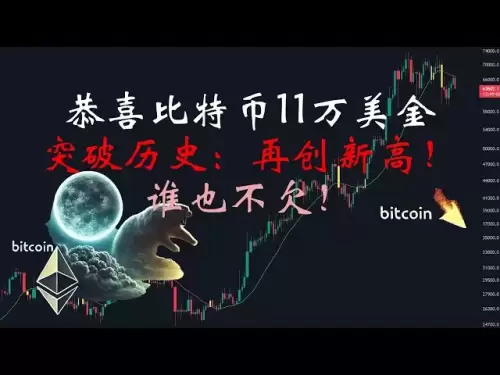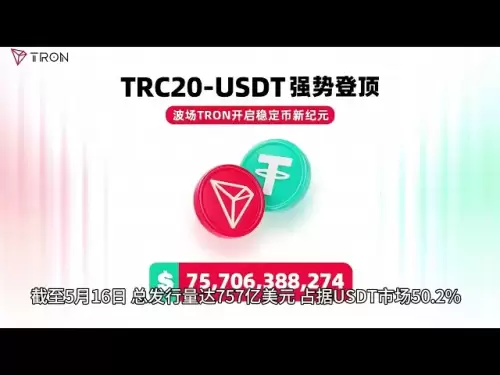-
 Bitcoin
Bitcoin $111,325.2168
2.08% -
 Ethereum
Ethereum $2,666.2932
3.87% -
 Tether USDt
Tether USDt $1.0002
0.01% -
 XRP
XRP $2.4327
1.31% -
 BNB
BNB $681.9858
2.68% -
 Solana
Solana $179.1127
3.93% -
 USDC
USDC $0.9997
0.01% -
 Dogecoin
Dogecoin $0.2414
4.06% -
 Cardano
Cardano $0.8034
4.89% -
 TRON
TRON $0.2776
1.86% -
 Sui
Sui $3.9288
-1.06% -
 Chainlink
Chainlink $16.8056
4.18% -
 Hyperliquid
Hyperliquid $32.2182
16.40% -
 Avalanche
Avalanche $25.0557
7.79% -
 Stellar
Stellar $0.3015
2.72% -
 Shiba Inu
Shiba Inu $0.0...01533
3.59% -
 Bitcoin Cash
Bitcoin Cash $434.9050
6.76% -
 Hedera
Hedera $0.2041
2.61% -
 UNUS SED LEO
UNUS SED LEO $8.8637
0.64% -
 Toncoin
Toncoin $3.1709
2.43% -
 Polkadot
Polkadot $4.9338
3.62% -
 Litecoin
Litecoin $99.2149
2.59% -
 Monero
Monero $400.2926
9.45% -
 Bitget Token
Bitget Token $5.2097
-0.56% -
 Pepe
Pepe $0.0...01444
3.52% -
 Pi
Pi $0.8132
-0.10% -
 Dai
Dai $0.9999
0.01% -
 Ethena USDe
Ethena USDe $1.0004
-0.04% -
 Bittensor
Bittensor $474.4408
11.01% -
 Uniswap
Uniswap $6.4668
2.17%
How to compare and analyze OBV and trading volume columns? What is the significance of the changes in red and green columns?
Analyzing OBV and trading volume helps traders spot trends and reversals; green columns signal buying, red columns indicate selling pressure.
May 22, 2025 at 07:35 pm
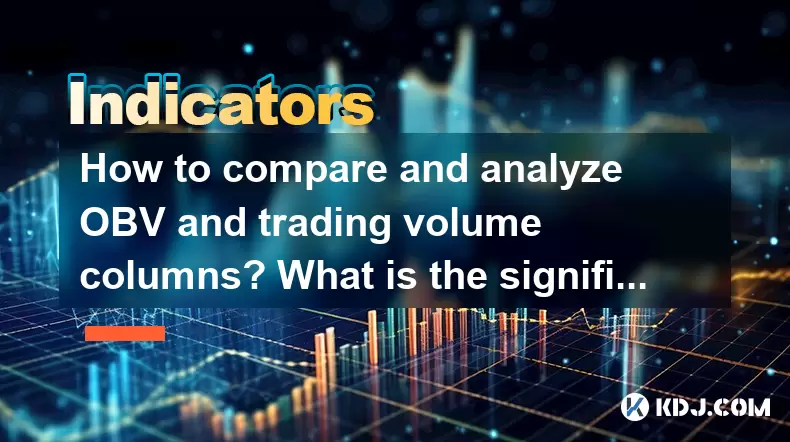
In the cryptocurrency trading world, understanding and analyzing the On-Balance Volume (OBV) and trading volume columns is crucial for making informed decisions. Both indicators provide valuable insights into market trends and potential price movements. In this article, we will delve into how to compare and analyze OBV and trading volume columns, and discuss the significance of changes in red and green columns.
Understanding OBV and Trading Volume
OBV (On-Balance Volume) is a technical indicator that measures buying and selling pressure as a cumulative indicator, adding volume on up days and subtracting it on down days. This helps traders understand the flow of money into and out of a security. When the OBV line rises, it suggests that buying pressure is increasing, which could lead to an upward price movement. Conversely, when the OBV line falls, it indicates increasing selling pressure, potentially leading to a price decline.
Trading Volume, on the other hand, represents the total number of shares or contracts traded within a specified time frame. High trading volume often indicates strong interest in a cryptocurrency, while low volume may suggest a lack of interest or a consolidation period. Volume is typically represented in bar or line charts and can be colored to show whether the price closed higher (green) or lower (red) than the previous period.
Comparing OBV and Trading Volume
To effectively compare OBV and trading volume, traders should look for divergences and confirmations between the two indicators.
- Divergence occurs when the OBV moves in the opposite direction of the price. For example, if the price of a cryptocurrency is rising but the OBV is falling, this could indicate that the upward price movement is not supported by strong buying pressure and may be due for a reversal.
- Confirmation happens when the OBV and price move in the same direction. If both the price and OBV are rising, this suggests a strong bullish trend, and if both are falling, it indicates a bearish trend.
Analyzing Changes in Red and Green Columns
The changes in red and green columns in trading volume charts provide additional insights into market sentiment and price movements.
- Green columns represent periods where the closing price was higher than the previous period. An increase in green columns, especially with rising volume, indicates strong buying interest and potential bullish momentum.
- Red columns indicate periods where the closing price was lower than the previous period. An increase in red columns, particularly with rising volume, suggests strong selling pressure and potential bearish momentum.
When analyzing these columns, pay attention to the following:
- Volume spikes in either red or green columns can signal significant market moves. A green volume spike might indicate a breakout, while a red volume spike could signal a breakdown.
- Consistency in the color of columns over time can help identify the strength of a trend. Consistent green columns may confirm an uptrend, while consistent red columns may confirm a downtrend.
Using OBV and Volume Together for Trading Decisions
Combining OBV and trading volume can enhance a trader's ability to make informed decisions. Here's how to use these indicators together:
- Trend Confirmation: Use OBV to confirm the strength of a trend identified by volume. If both indicators are moving in the same direction, it provides a stronger signal for entering or exiting trades.
- Reversal Signals: Look for divergences between OBV and price, supported by changes in volume color. If the price is rising but OBV is falling with increasing red columns, it may signal an impending reversal.
- Breakout/ Breakdown Confirmation: Use volume spikes in conjunction with OBV movements to confirm breakouts or breakdowns. A green volume spike with rising OBV can confirm a bullish breakout, while a red volume spike with falling OBV can confirm a bearish breakdown.
Practical Steps for Analyzing OBV and Volume
To effectively analyze OBV and trading volume, follow these practical steps:
- Select a Charting Platform: Choose a reliable charting platform that offers both OBV and volume indicators. Popular platforms include TradingView, Coinigy, and CryptoWatch.
- Add Indicators to Your Chart:
- Add the OBV indicator to your chart. This is typically found under the "Indicators" or "Studies" section of your charting platform.
- Ensure the volume indicator is visible on your chart. Most platforms display volume by default, but you may need to customize the color settings to differentiate between red and green columns.
- Analyze the Indicators:
- Observe the OBV line and its direction relative to the price movement. Look for divergences and confirmations.
- Monitor the volume bars or lines, paying attention to the color (red or green) and the size of the bars.
- Identify any volume spikes and assess their significance in conjunction with the OBV line.
- Make Trading Decisions:
- Use the insights gained from OBV and volume to make informed trading decisions. For example, if you observe a bullish divergence with increasing green volume, it might be a good time to enter a long position.
- Continuously monitor these indicators to adjust your trading strategy as market conditions change.
Interpreting OBV and Volume in Different Market Conditions
Understanding how OBV and volume behave in different market conditions can further enhance your analysis.
- Bullish Markets: In bullish markets, look for rising OBV and increasing green volume columns. This combination suggests strong buying pressure and can confirm an uptrend.
- Bearish Markets: In bearish markets, falling OBV and increasing red volume columns indicate strong selling pressure and can confirm a downtrend.
- Sideways Markets: In sideways markets, OBV and volume can help identify potential breakouts or breakdowns. Look for volume spikes and corresponding OBV movements to anticipate directional moves.
Case Studies: Real-World Examples
To illustrate the practical application of OBV and volume analysis, let's consider a couple of real-world examples from the cryptocurrency market.
Example 1: Bitcoin Bullish Breakout:
- Scenario: Bitcoin (BTC) is trading in a consolidation range. Suddenly, there's a significant green volume spike, and the OBV line starts to rise sharply.
- Analysis: The green volume spike and rising OBV indicate strong buying pressure. This combination suggests a potential bullish breakout.
- Action: Traders might consider entering a long position, anticipating further price increases.
Example 2: Ethereum Bearish Reversal:
- Scenario: Ethereum (ETH) is in an uptrend, but the OBV line begins to fall while the price continues to rise. Concurrently, red volume columns start to increase.
- Analysis: The divergence between the falling OBV and rising price, along with increasing red volume, suggests a potential bearish reversal.
- Action: Traders might consider exiting long positions or entering short positions, anticipating a price decline.
Frequently Asked Questions
Q1: Can OBV and volume be used for short-term trading strategies?
A1: Yes, OBV and volume can be used for short-term trading strategies. Traders can look for short-term divergences and volume spikes to identify potential entry and exit points. However, short-term trading requires careful monitoring and quick decision-making, as market conditions can change rapidly.
Q2: How reliable are OBV and volume as standalone indicators?
A2: While OBV and volume are powerful tools, they are most effective when used in conjunction with other technical indicators and fundamental analysis. Relying solely on OBV and volume may lead to false signals, especially in volatile markets. Combining these indicators with others, such as moving averages or RSI, can provide a more comprehensive view of market conditions.
Q3: What should traders do if they notice conflicting signals between OBV and volume?
A3: If traders notice conflicting signals between OBV and volume, they should consider additional factors before making a decision. This could include checking other technical indicators, analyzing market news, and assessing overall market sentiment. Conflicting signals often indicate a need for further analysis and caution in trading decisions.
Q4: How can traders use OBV and volume to manage risk?
A4: Traders can use OBV and volume to manage risk by setting stop-loss orders based on volume spikes and OBV reversals. For example, if a trader enters a long position based on a bullish signal, they might set a stop-loss below a recent low, especially if volume and OBV start to decline. This approach helps limit potential losses if the market moves against their position.
Disclaimer:info@kdj.com
The information provided is not trading advice. kdj.com does not assume any responsibility for any investments made based on the information provided in this article. Cryptocurrencies are highly volatile and it is highly recommended that you invest with caution after thorough research!
If you believe that the content used on this website infringes your copyright, please contact us immediately (info@kdj.com) and we will delete it promptly.
- Bitcoin soared to a new all-time high above $111,000
- 2025-05-22 23:40:13
- Pepe and Influencer Pepe (INPEPE): The Rumors, Shiba's History, and Why INPEPE Could Be the Next Big Winner
- 2025-05-22 23:40:13
- Influencers Are Flocking to This Next-Gen Meme Coin, Delivering 100x Returns to Early Investors
- 2025-05-22 23:35:28
- Could Solaxy Grow , But Is It Really What Solana Needs?
- 2025-05-22 23:35:28
- Internet Computer Protocol (ICP) Has Gained 6.7% in the Past 24 Hours
- 2025-05-22 23:30:13
- Bitcoin (BTC) Hits New All-Time High of $111,861, Lifting Cardano (ADA) Price
- 2025-05-22 23:30:13
Related knowledge
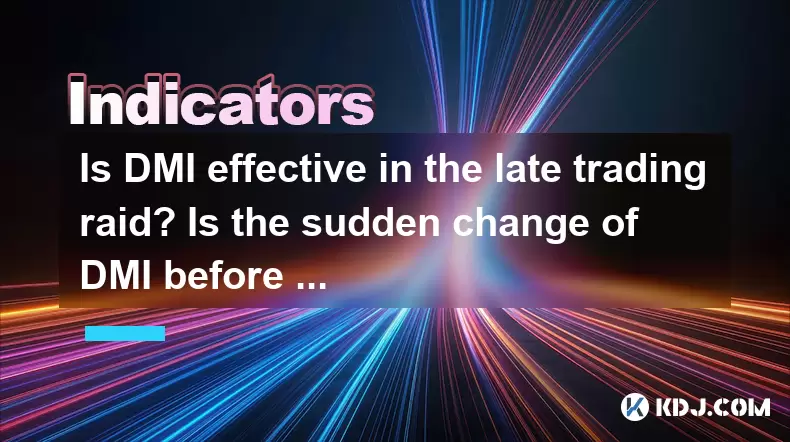
Is DMI effective in the late trading raid? Is the sudden change of DMI before the closing credible?
May 22,2025 at 11:07pm
Understanding DMI in Cryptocurrency TradingDirectional Movement Index (DMI), often referred to simply as DMI, is a technical analysis tool used by traders to assess the strength and direction of a price trend. In the context of cryptocurrency trading, DMI can be particularly useful for identifying potential entry and exit points. The DMI consists of thr...
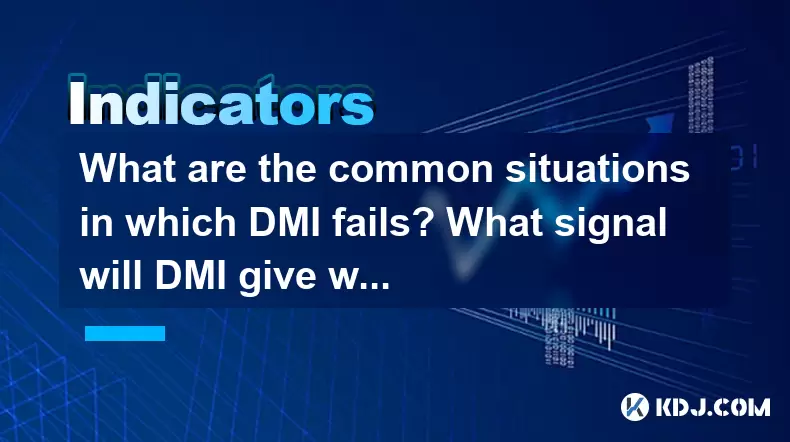
What are the common situations in which DMI fails? What signal will DMI give when there is a false breakthrough?
May 22,2025 at 11:49pm
The Directional Movement Index (DMI) is a popular technical analysis indicator used by traders in the cryptocurrency market to determine the strength of a trend and potential trading opportunities. However, like all technical indicators, the DMI is not infallible and can sometimes fail to provide accurate signals. This article will explore common situat...
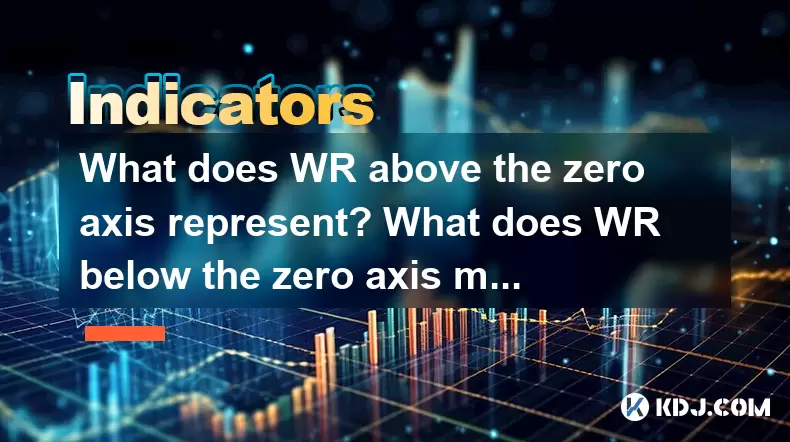
What does WR above the zero axis represent? What does WR below the zero axis mean?
May 22,2025 at 11:56pm
In the realm of cryptocurrency trading, technical analysis plays a crucial role in understanding market trends and making informed decisions. One of the key indicators used by traders is the Williams %R (WR), a momentum indicator that helps identify overbought and oversold conditions in the market. This article will delve into the significance of the WR...
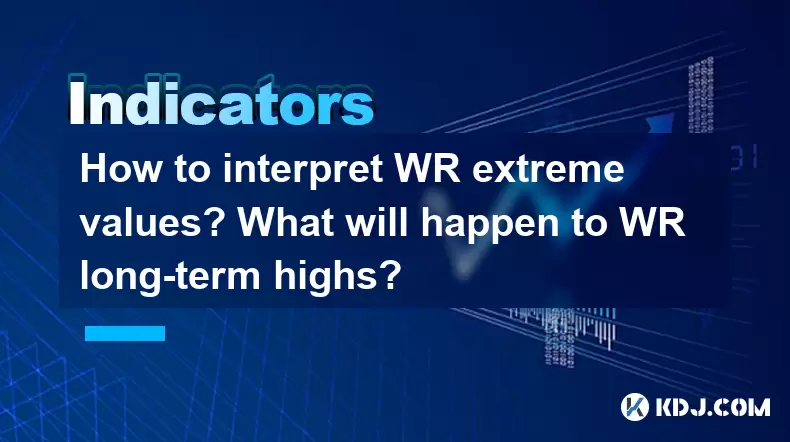
How to interpret WR extreme values? What will happen to WR long-term highs?
May 22,2025 at 10:36pm
The Williams %R (WR) indicator is a momentum indicator used in technical analysis to measure overbought and oversold levels in the market. Developed by Larry Williams, the WR indicator helps traders identify potential reversal points in the price of an asset. In this article, we will delve into how to interpret extreme values of the WR indicator and wha...
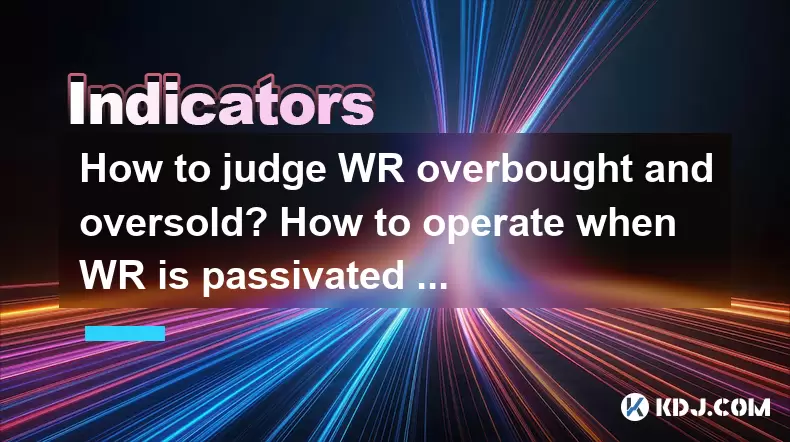
How to judge WR overbought and oversold? How to operate when WR is passivated at a high level?
May 22,2025 at 10:42pm
Understanding WR IndicatorThe Williams %R (WR), also known as the Williams Percent Range, is a momentum indicator used in technical analysis to identify overbought and oversold conditions in the market. Developed by Larry Williams, this indicator measures the level of the close relative to the high-low range over a specific period, typically 14 days. Th...
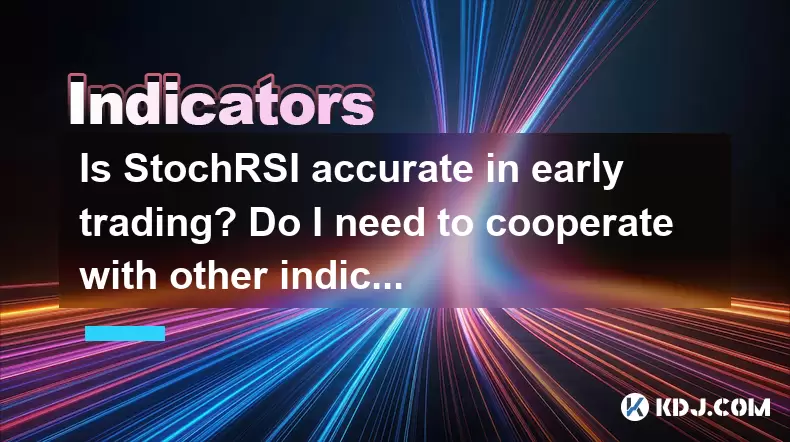
Is StochRSI accurate in early trading? Do I need to cooperate with other indicators?
May 22,2025 at 09:01pm
Introduction to StochRSIThe Stochastic RSI, or StochRSI, is a technical indicator that combines the principles of the Stochastic Oscillator and the Relative Strength Index (RSI). It aims to identify overbought and oversold conditions in the market more quickly than the traditional RSI. The StochRSI oscillates between 0 and 1, providing traders with sign...

Is DMI effective in the late trading raid? Is the sudden change of DMI before the closing credible?
May 22,2025 at 11:07pm
Understanding DMI in Cryptocurrency TradingDirectional Movement Index (DMI), often referred to simply as DMI, is a technical analysis tool used by traders to assess the strength and direction of a price trend. In the context of cryptocurrency trading, DMI can be particularly useful for identifying potential entry and exit points. The DMI consists of thr...

What are the common situations in which DMI fails? What signal will DMI give when there is a false breakthrough?
May 22,2025 at 11:49pm
The Directional Movement Index (DMI) is a popular technical analysis indicator used by traders in the cryptocurrency market to determine the strength of a trend and potential trading opportunities. However, like all technical indicators, the DMI is not infallible and can sometimes fail to provide accurate signals. This article will explore common situat...

What does WR above the zero axis represent? What does WR below the zero axis mean?
May 22,2025 at 11:56pm
In the realm of cryptocurrency trading, technical analysis plays a crucial role in understanding market trends and making informed decisions. One of the key indicators used by traders is the Williams %R (WR), a momentum indicator that helps identify overbought and oversold conditions in the market. This article will delve into the significance of the WR...

How to interpret WR extreme values? What will happen to WR long-term highs?
May 22,2025 at 10:36pm
The Williams %R (WR) indicator is a momentum indicator used in technical analysis to measure overbought and oversold levels in the market. Developed by Larry Williams, the WR indicator helps traders identify potential reversal points in the price of an asset. In this article, we will delve into how to interpret extreme values of the WR indicator and wha...

How to judge WR overbought and oversold? How to operate when WR is passivated at a high level?
May 22,2025 at 10:42pm
Understanding WR IndicatorThe Williams %R (WR), also known as the Williams Percent Range, is a momentum indicator used in technical analysis to identify overbought and oversold conditions in the market. Developed by Larry Williams, this indicator measures the level of the close relative to the high-low range over a specific period, typically 14 days. Th...

Is StochRSI accurate in early trading? Do I need to cooperate with other indicators?
May 22,2025 at 09:01pm
Introduction to StochRSIThe Stochastic RSI, or StochRSI, is a technical indicator that combines the principles of the Stochastic Oscillator and the Relative Strength Index (RSI). It aims to identify overbought and oversold conditions in the market more quickly than the traditional RSI. The StochRSI oscillates between 0 and 1, providing traders with sign...
See all articles























